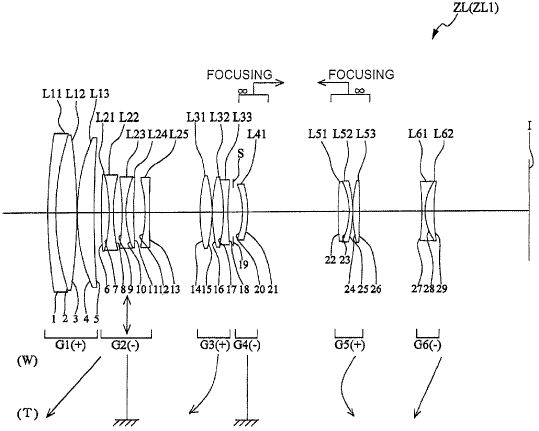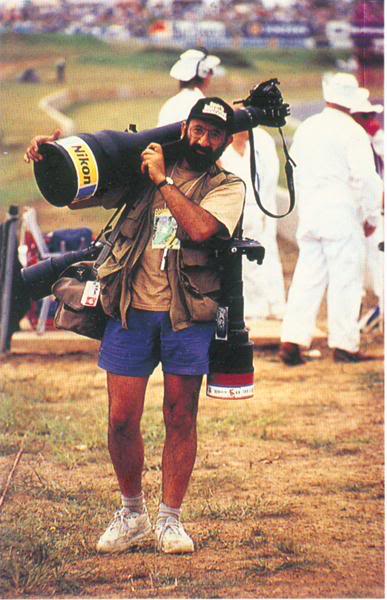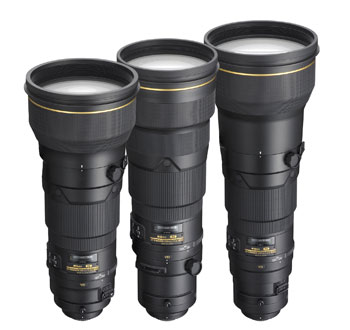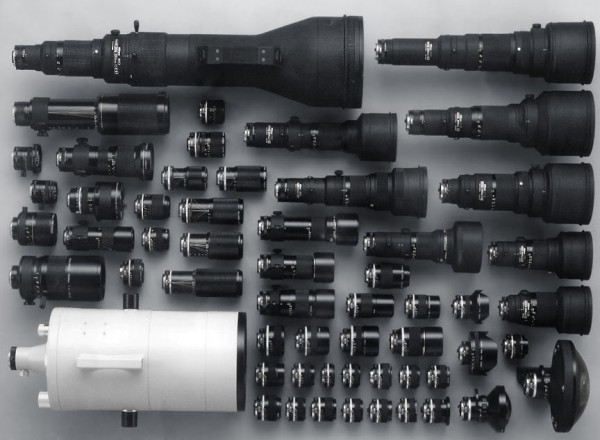Nikon: The biggest digital camera seller in the world (mostly because of its sales of compact photo cameras), an internationally famous reference for the quality of its lens and it SLR cameras. Wildlife photographers (professionals as well as amateurs) must take this offering very seriously. But the fame did not come from nothing, and the nature photographer will find whatever is needed satisfy his/her requirements.
Amateur
Since animals are always hard to approach (in an African safari as well as in a European forest), you must have a lens with the adequate focal length: As long as possible. 300mm is the strict minimum (400mm would be better). But if you want to stay in a tolerable price range (isn’t the amateur defined by his/her high sensitivity to cost issues), it would be better to purchase a zoom lens rather than a prime lens (with fixed focal length). It’s true that a zoom is also easier to handle and use when the distance is imposed by the approach conditions and limits).
Taking these into account, Nikon offers two actual possibilities, despite being very different ones. The first is a 70-300mm f/4,5-5,6 ED IF AF-S VR zoom. Its focal range is quite extended, it’s stabilized, it has super-sonic motor assisted AF, but -over everything else- its picture quality is an excellent surprise (considering its price: You can get it under 500€ on eBay – second-hand).
However, there is a second possibility to reach longer focal lengths: The 80-400mm f/4,5-5,6 D ED AF VR has an optimal focal range, a perfect weight (and handling) and vibration reduction (image stabilization). But the image quality is not totally there. This lens suffers from a relatively old design which will force you to strong post-treatment or to systematically work at f/8 with the longest focal (The most important and most often used one, of course).
Personally, I would prefer the 70-300mm (for its sharpness). But the choice is still difficult. One future event could make it easier and re-shuffle cards: All leaked informations indicate that Nikon is currently working on a new version of the 80-400mm (two recent patent applications are proof of it). We can easily imagine the arrival of an excellent 80-400mm at the end of 2011. If the price stays at a reasonable level (but certainly not under 1000€ anyway), the balance will be tipped toward this newer lens.

Whatever the tele-lens used, the amateur will nearly automatically attach it to a Nikon D7000. This successor to the glorious D90 is so well balanced and brings such an image quality that it’s difficult to recommend anything else right now (end of 2010, beginning of 2011).
In order to also allow landscape photography, I recommend to also bag an 18-70mm f/3,5-4,5 G ED IF AF-S DX. You’ll notice that it shares the same filter diameter (67mm) with the 70-300mm (a cent is a cent, right?). But, more importantly, this will be a well-balanced set for image quality.
Enthusiast
The photographer claiming to be an expert or willing to chase a more ambitious goal will not be contented with the above zoom lenses recommended to the amateur. Here again, I will have to ideas to share according to the depth of your pockets. If you want to go low in costs, look at a 300mm (possibly a second-hand one) like the 300mm f/4 IF ED which despite the lack of stabilization (no VR) has a great image quality to show.
Unfortunately, Nikon has nothing very convincing in terms of both quality and price around 400mm. It will be around and over 5000€ (second-hand!) that we will find the next two lenses despite their very different feature sets.
- If you favor a wide aperture (and its associated nice and soft backgrounds), you will look at the beautiful (but heavy) 400mm f/2,8 D IF-ED II AF-S (or the 400mm f/2,8 G ED AF-S VR which is slightly less expensive and stabilized). It has many fans for a good reason.
- Personally, I fall for the surprising 200-400mm f/4 G IF-ED A-S VR. Its sharpness stays quite homogeneous (and very high) over the focal range and over the aperture range. It’s only drawback: You’re not the only one to know it and the price does not drop much on the second-hand market.
One specificity of the Nikon lens offering is to include excellent focal multipliers. Like nearly all its competitors, the doubler (x2.0) sacrificed too much of image sharpness but the x1.4 and also x1.7 multipliers are impressively good tools.
If you limit yourself to a maximum f/4 aperture and if you use a focal multiplier, it is important to have an SLR body able to produce nice pictures up to 1600 ISO. The Nikon D7000 is still the best candidate here. It’s only drawback is the small size of its image buffer which will limit the number of pictures stored in continuous shooting mode (you will have to keep a light finger on the shutter button)
Add to that solution a low focal length complement. The exceptional 70-200mm f/2,8 G AF-S ED VR II is strongly recommended for this; And complement it with a 17-55mm f/2,8 G IF-ED AF-S DX, very beautiful lens for landscape photography on the excellent DX sensor (in “APS-C” size) of the Nikon D7000.

Pro
But Nikon really shines when you want the best possible quality. If your budget has no limit (or if your dad is Ben Bernanke), Nikon has it all. The fame of the yellow brand is made exactly out of this, and it shows. But, be ready to invest sums that are really not available to mere mortals.
The professional range of tele-lenses of Nikon no longer needs to be presented; You only have to choose from it. I have difficulties recommending the 600mm f/4 D EF-ID II AF-S because of its 4.8 kg / 10.7 lb. weight. Laurent Baheux is the only one I know who uses it without a tripod (often on some kind of support anyway). But he is a wildlife photographer trained as a sports pro photographer. It could be associated to a 400mm f/2,8 D ED-IF II AF-S.

But I would rather be tempted by the more reasonable weight association (Still, make an appointment with your physiotherapist) of a 300mm f/2,8 ED AF-S VR II and a 500mm f/4 D ED-IF II AF-S (The latter also is no less than 3.4 kg / 7.5 lb.) which will be complemented with a x1.4 focal multiplier for a very extended coverage.
Since we’re no longer afraid of anything, the SLR body will naturally be a Nikon D3s for its enormous sensitivity (ISO 6400 is OK for beautiful pictures and it’s not frightened of ISO 102,400).
Do you still have some space left in your bad? Add a 70-200mm f/2,8 G AF-S ED VR II zoom and a 14-24mm f/2,8 G ED AF-S zoom for settings less strongly under the wildlife influence.
Conclusion
As you easily noticed, the Nikon range is more extensive for (or more well targeted to) the pro photographers than the amateur or even the enthusiast. We could be tempted to chose another brand, but, with Nikon, we do long-time investments (which is a major permanent recommendation when speaking about purchasing lenses). Moreover, the NIKON offering of SLR bodies is currently the most impressive and the most powerful on the market (It will change for sure).
The wildlife photographer will be easily contented at Nikon.


Comments
One response to “Best Nikon SLR lenses for wildlife photo”
The 200-400mm zoom lens seems to have quite mixed reviews and some people will argue that its quality is degraded when shooting at long distance (whatever the focal length) or at distances longer than the usual test/review distance.
It stays quite attractive, but checking the lens you want to buy may be needed.